- Home
- Stephen King
On Writing Page 3
On Writing Read online
Page 3
– 13 –
The first story I did actually publish was in a horror fanzine issued by Mike Garrett of Birmingham, Alabama (Mike is still around, and still in the biz). He published this novella under the title “In a Half-World of Terror,” but I still like my title much better. Mine was “I Was a Teen-Age Grave-robber.” Super Duper! Pow!
– 14 –
My first really original story idea—you always know the first one, I think—came near the end of Ike’s eight-year reign of benignity. I was sitting at the kitchen table of our house in Durham, Maine, and watching my mother stick sheets of S&H Green Stamps into a book. (For more colorful stories about Green Stamps, see The Liars’ Club.) Our little family troika had moved back to Maine so our mom could take care of her parents in their declining years. Mama was about eighty at that time, obese and hypertensive and mostly blind; Daddy Guy was eighty-two, scrawny, morose, and prone to the occasional Donald Duck outburst which only my mother could understand. Mom called Daddy Guy “Fazza.”
My mother’s sisters had gotten my mom this job, perhaps thinking they could kill two birds with one stone—the aged Ps would be taken care of in a homey environment by a loving daughter, and The Nagging Problem of Ruth would be solved. She would no longer be adrift, trying to take care of two boys while she floated almost aimlessly from Indiana to Wisconsin to Connecticut, baking cookies at five in the morning or pressing sheets in a laundry where the temperatures often soared to a hundred and ten in the summer and the foreman gave out salt pills at one and three every afternoon from July to the end of September.
She hated her new job, I think—in their effort to take care of her, her sisters turned our self-sufficient, funny, slightly nutty mother into a sharecropper living a largely cashless existence. The money the sisters sent her each month covered the groceries but little else. They sent boxes of clothes for us. Toward the end of each summer, Uncle Clayt and Aunt Ella (who were not, I think, real relatives at all) would bring cartons of canned vegetables and preserves. The house we lived in belonged to Aunt Ethelyn and Uncle Oren. And once she was there, Mom was caught. She got another actual job after the old folks died, but she lived in that house until the cancer got her. When she left Durham for the last time—David and his wife Linda cared for her during the final weeks of her final illness—I have an idea she was probably more than ready to go.
– 15 –
Let’s get one thing clear right now, shall we? There is no Idea Dump, no Story Central, no Island of the Buried Bestsellers; good story ideas seem to come quite literally from nowhere, sailing at you right out of the empty sky: two previously unrelated ideas come together and make something new under the sun. Your job isn’t to find these ideas but to recognize them when they show up.
On the day this particular idea—the first really good one—came sailing at me, my mother remarked that she needed six more books of stamps to get a lamp she wanted to give her sister Molly for Christmas, and she didn’t think she would make it in time. “I guess it will have to be for her birthday, instead,” she said. “These cussed things always look like a lot until you stick them in a book.” Then she crossed her eyes and ran her tongue out at me. When she did, I saw her tongue was S&H green. I thought how nice it would be if you could make those damned stamps in your basement, and in that instant a story called “Happy Stamps” was born. The concept of counterfeiting Green Stamps and the sight of my mother’s green tongue created it in an instant.
The hero of my story was your classic Poor Schmuck, a guy named Roger who had done jail time twice for counterfeiting money—one more bust would make him a three-time loser. Instead of money, he began to counterfeit Happy Stamps . . . . except, he discovered, the design of Happy Stamps was so moronically simple that he wasn’t really counterfeiting at all; he was creating reams of the actual article. In a funny scene—probably the first really competent scene I ever wrote—Roger sits in the living room with his old mom, the two of them mooning over the Happy Stamps catalogue while the printing press runs downstairs, ejecting bale after bale of those same trading stamps.
“Great Scott!” Mom says. “According to the fine print, you can get anything with Happy Stamps, Roger—you tell them what you want, and they figure out how many books you need to get it. Why, for six or seven million books, we could probably get a Happy Stamps house in the suburbs!”
Roger discovers, however, that although the stamps are perfect, the glue is defective. If you lap the stamps and stick them in the book they’re fine, but if you send them through a mechanical licker, the pink Happy Stamps turn blue. At the end of the story, Roger is in the basement, standing in front of a mirror. Behind him, on the table, are roughly ninety books of Happy Stamps, each book filled with individually licked sheets of stamps. Our hero’s lips are pink. He runs out his tongue; that’s even pinker. Even his teeth are turning pink. Mom calls cheerily down the stairs, saying she has just gotten off the phone with the Happy Stamps National Redemption Center in Terre Haute, and the lady said they could probably get a nice Tudor home in Weston for only eleven million, six hundred thousand books of Happy Stamps.
“That’s nice, Mom,” Roger says. He looks at himself a moment longer in the mirror, lips pink and eyes bleak, then slowly returns to the table. Behind him, billions of Happy Stamps are stuffed into basement storage bins. Slowly, our hero opens a fresh stamp-book, then begins to lick sheets and stick them in. Only eleven million, five hundred and ninety thousand books to go, he thinks as the story ends, and Mom can have her Tudor.
There were things wrong with this story (the biggest hole was probably Roger’s failure simply to start over with a different glue), but it was cute, it was fairly original, and I knew I had done some pretty good writing. After a long time spent studying the markets in my beat-up Writer’s Digest, I sent “Happy Stamps” off to Alfred Hitchcock’s Mystery Magazine. It came back three weeks later with a form rejection slip attached. This slip bore Alfred Hitchcock’s unmistakable profile in red ink and wished me good luck with my story. At the bottom was an unsigned jotted message, the only personal response I got from AHMM over eight years of periodic submissions. “Don’t staple manuscripts,” the postscript read. “Loose pages plus paperclip equal correct way to submit copy.” This was pretty cold advice, I thought, but useful in its way. I have never stapled a manuscript since.
– 16 –
My room in our Durham house was upstairs, under the eaves. At night I could lie in bed beneath one of these eaves—if I sat up suddenly, I was apt to whack my head a good one—and read by the light of a gooseneck lamp that put an amusing boa constrictor of shadow on the ceiling. Sometimes the house was quiet except for the whoosh of the furnace and the patter of rats in the attic; sometimes my grandmother would spend an hour or so around midnight yelling for someone to check Dick—she was afraid he hadn’t been fed. Dick, a horse she’d had in her days as a schoolteacher, was at least forty years dead. I had a desk beneath the room’s other eave, my old Royal typewriter, and a hundred or so paperback books, mostly science fiction, which I lined up along the baseboard. On my bureau was a Bible won for memorizing verses in Methodist Youth Fellowship and a Webcor phonograph with an automatic changer and a turntable covered in soft green velvet. On it I played my records, mostly 45s by Elvis, Chuck Berry, Freddy Cannon, and Fats Domino. I liked Fats; he knew how to rock, and you could tell he was having fun.
When I got the rejection slip from AHMM, I pounded a nail into the wall above the Webcor, wrote “Happy Stamps” on the rejection slip, and poked it onto the nail. Then I sat on my bed and listened to Fats sing “I’m Ready.” I felt pretty good, actually. When you’re still too young to shave, optimism is a perfectly legitimate response to failure.
By the time I was fourteen (and shaving twice a week whether I needed to or not) the nail in my wall would no longer support the weight of the rejection slips impaled upon it. I replaced the nail with a spike and went on writing. By the time I was sixteen I’d begun to get rejection s
lips with handwritten notes a little more encouraging than the advice to stop using staples and start using paperclips. The first of these hopeful notes was from Algis Budrys, then the editor of Fantasy and Science Fiction, who read a story of mine called “The Night of the Tiger” (the inspiration was, I think, an episode of The Fugitive in which Dr. Richard Kimble worked as an attendant cleaning out cages in a zoo or a circus) and wrote: “This is good. Not for us, but good. You have talent. Submit again.”
Those four brief sentences, scribbled by a fountain pen that left big ragged blotches in its wake, brightened the dismal winter of my sixteenth year. Ten years or so later, after I’d sold a couple of novels, I discovered “The Night of the Tiger” in a box of old manuscripts and thought it was still a perfectly respectable tale, albeit one obviously written by a guy who had only begun to learn his chops. I rewrote it and on a whim resubmitted it to F&SF. This time they bought it. One thing I’ve noticed is that when you’ve had a little success, magazines are a lot less apt to use that phrase, “Not for us.”
– 17 –
Although he was a year younger than his classmates, my big brother was bored with high school. Some of this had to do with his intellect—Dave’s IQ tested in the 150s or 160s—but I think it was mostly his restless nature. For Dave, high school just wasn’t super duper enough—there was no pow, no wham, no fun. He solved the problem, at least temporarily, by creating a newspaper which he called Dave’s Rag.
The Rag’s office was a table located in the dirt-floored, rock-walled, spider-infested confines of our basement, somewhere north of the furnace and east of the root-cellar, where Clayt and Ella’s endless cartons of preserves and canned vegetables were kept. The Rag was an odd combination of family newsletter and small-town bi-weekly. Sometimes it was a monthly, if Dave got sidetracked by other interests (maple-sugaring, cider-making, rocket-building, and car-customizing, just to name a few), and then there would be jokes I didn’t understand about how Dave’s Rag was a little late this month or how we shouldn’t bother Dave, because he was down in the basement, on the Rag.
Jokes or no jokes, circulation rose slowly from about five copies per issue (sold to nearby family members) to something like fifty or sixty, with our relatives and the relatives of neighbors in our small town (Durham’s population in 1962 was about nine hundred) eagerly awaiting each new edition. A typical number would let people know how Charley Harrington’s broken leg was mending, what guest speakers might be coming to the West Durham Methodist Church, how much water the King boys were hauling from the town pump to keep from draining the well behind the house (of course it went dry every fucking summer no matter how much water we hauled), who was visiting the Browns or the Halls on the other side of Methodist Corners, and whose relatives were due to hit town each summer. Dave also included sports, word-games, weather reports (“It’s been pretty dry, but local farmer Harold Davis says if we don’t have at least one good rain in August he will smile and kiss a pig”), recipes, a continuing story (I wrote that), and Dave’s Jokes and Humor, which included nuggets like these:
Stan: “What did the beaver say to the oak tree?”
Jan: “It was nice gnawing you!”
1st Beatnik: “How do you get to Carnegie Hall?”
2nd Beatnik: “Practice man practice!”
During the Rag’s first year, the print was purple—those issues were produced on a flat plate of jelly called a hectograph. My brother quickly decided the hectograph was a pain in the butt. It was just too slow for him. Even as a kid in short pants, Dave hated to be halted. Whenever Milt, our mom’s boyfriend (“Sweeter than smart,” Mom said to me one day a few months after she dropped him), got stuck in traffic or at a stoplight, Dave would lean over from the back seat of Milt’s Buick and yell, “Drive over em, Uncle Milt! Drive over em!”
As a teenager, waiting for the hectograph to “freshen” between pages printed (while “freshening,” the print would melt into a vague purple membrane which hung in the jelly like a manatee’s shadow) drove David all but insane with impatience. Also, he badly wanted to add photographs to the newspaper. He took good ones, and by age sixteen he was developing them, as well. He rigged a darkroom in a closet and from its tiny, chemical-stinking confines produced pictures which were often startling in their clarity and composition (the photo on the back of The Regulators, showing me with a copy of the magazine containing my first published story, was taken by Dave with an old Kodak and developed in his closet darkroom).
In addition to these frustrations, the flats of hectograph jelly had a tendency to incubate and support colonies of strange, sporelike growths in the unsavory atmosphere of our basement, no matter how meticulous we were about covering the damned old slowcoach thing once the day’s printing chores were done. What looked fairly ordinary on Monday sometimes looked like something out of an H. P. Lovecraft horror tale by the weekend.
In Brunswick, where he went to high school, Dave found a shop with a small drum printing press for sale. It worked—barely. You typed up your copy on stencils which could be purchased in a local office-supply store for nineteen cents apiece—my brother called this chore “cutting stencil,” and it was usually my job, as I was less prone to make typing errors. The stencils were attached to the drum of the press, lathered up with the world’s stinkiest, oogiest ink, and then you were off to the races—crank ‘til your arm falls off, son. We were able to put together in two nights what had previously taken a week with the hectograph, and while the drum-press was messy, it did not look infected with a potentially fatal disease. Dave’s Rag entered its brief golden age.
– 18 –
I wasn’t much interested in the printing process, and I wasn’t interested at all in the arcana of first developing and then reproducing photographs. I didn’t care about putting Hearst shifters in cars, making cider, or seeing if a certain formula would send a plastic rocket into the stratosphere (usually they didn’t even make it over the house). What I cared about most between 1958 and 1966 was movies.
As the fifties gave way to the sixties, there were only two movie theaters in the area, both in Lewiston. The Empire was the first-run house, showing Disney pictures, Bible epics, and musicals in which widescreen ensembles of well-scrubbed folks danced and sang. I went to these if I had a ride—a movie was a movie, after all—but I didn’t like them very much. They were boringly wholesome. They were predictable. During The Parent Trap, I kept hoping Hayley Mills would run into Vic Morrow from The Blackboard Jungle. That would have livened things up a little, by God. I felt that one look at Vic’s switchblade knife and gimlet gaze would have put Hayley’s piddling domestic problems in some kind of reasonable perspective. And when I lay in bed at night under my eave, listening to the wind in the trees or the rats in the attic, it was not Debbie Reynolds as Tammy or Sandra Dee as Gidget that I dreamed of, but Yvette Vickers from Attack of the Giant Leeches or Luana Anders from Dementia 13. Never mind sweet; never mind uplifting; never mind Snow White and the Seven Goddam Dwarfs. At thirteen I wanted monsters that ate whole cities, radioactive corpses that came out of the ocean and ate surfers, and girls in black bras who looked like trailer trash.
Horror movies, science fiction movies, movies about teenage gangs on the prowl, movies about losers on motorcycles—this was the stuff that turned my dials up to ten. The place to get all of this was not at the Empire, on the upper end of Lisbon Street, but at the Ritz, down at the lower end, amid the pawnshops and not far from Louie’s Clothing, where in 1964 I bought my first pair of Beatle boots. The distance from my house to the Ritz was fourteen miles, and I hitchhiked there almost every weekend during the eight years between 1958 and 1966, when I finally got my driver’s license. Sometimes I went with my friend Chris Chesley, sometimes I went alone, but unless I was sick or something, I always went. It was at the Ritz that I saw I Married a Monster from Outer Space, with Tom Tryon; The Haunting, with Claire Bloom and Julie Harris; The Wild Angels, with Peter Fonda and Nancy Sinatra. I saw Olivia de Havillan
d put out James Caan’s eyes with makeshift knives in Lady in a Cage, saw Joseph Cotten come back from the dead in Hush . . . . Hush, Sweet Charlotte, and watched with held breath (and not a little prurient interest) to see if Allison Hayes would grow all the way out of her clothes in Attack of the 50 Ft. Woman. At the Ritz, all the finer things in life were available . . . . or might be available, if you only sat in the third row, paid close attention, and did not blink at the wrong moment.
Chris and I liked just about any horror movie, but our faves were the string of American-International films, most directed by Roger Corman, with titles cribbed from Edgar Allan Poe. I wouldn’t say based upon the works of Edgar Allan Poe, because there is little in any of them which has anything to do with Poe’s actual stories and poems (The Raven was filmed as a comedy—no kidding). And yet the best of them—The Haunted Palace, The Conqueror Worm, The Masque of the Red Death—achieved a hallucinatory eeriness that made them special. Chris and I had our own name for these films, one that made them into a separate genre. There were westerns, there were love stories, there were war stories . . . . and there were Poepictures.
“Wanna hitch to the show Saturday afternoon?” Chris would ask. “Go to the Ritz?”
“What’s on?” I’d ask.
“A motorcycle picture and a Poepicture,” he’d say. I, of course, was on that combo like white on rice. Bruce Dern going batshit on a Harley and Vincent Price going batshit in a haunted castle overlooking a restless ocean: who could ask for more? You might even get Hazel Court wandering around in a lacy low-cut nightgown, if you were lucky.

 The Stand
The Stand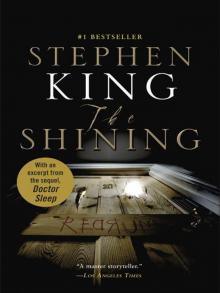 The Shining
The Shining It
It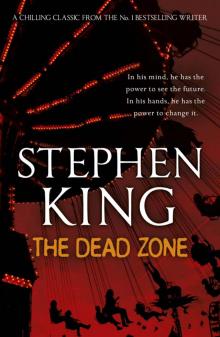 The Dead Zone
The Dead Zone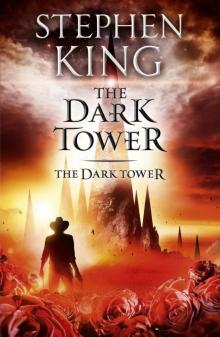 The Dark Tower
The Dark Tower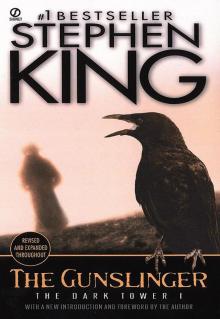 The Gunslinger
The Gunslinger Song of Susannah
Song of Susannah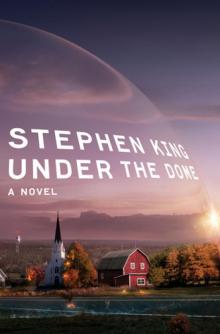 Under the Dome
Under the Dome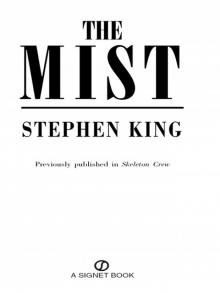 The Mist
The Mist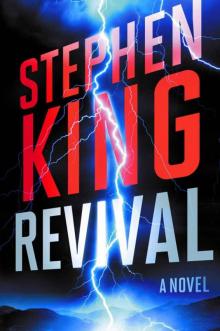 Revival
Revival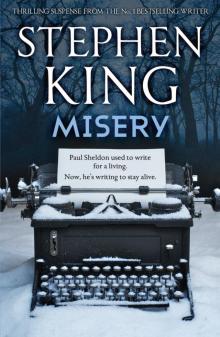 Misery
Misery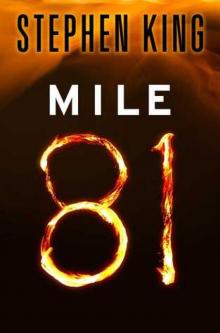 Mile 81
Mile 81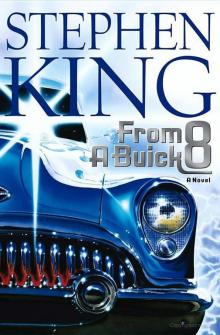 From a Buick 8
From a Buick 8 Just After Sunset
Just After Sunset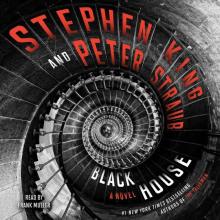 Black House
Black House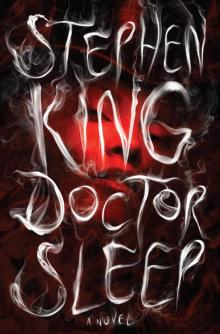 Doctor Sleep
Doctor Sleep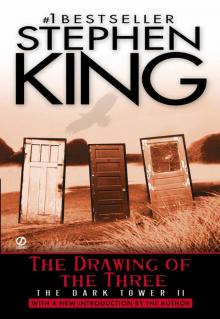 The Drawing of the Three
The Drawing of the Three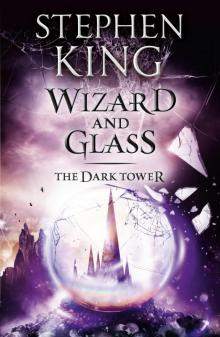 Wizard and Glass
Wizard and Glass Dolores Claiborne
Dolores Claiborne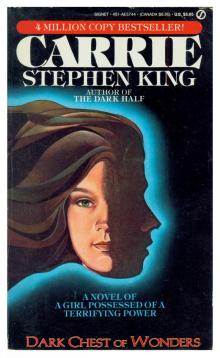 Carrie
Carrie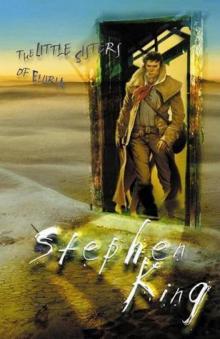 The Little Sisters of Eluria
The Little Sisters of Eluria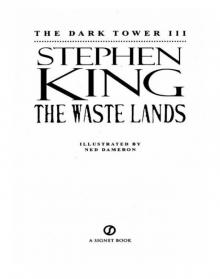 The Waste Lands
The Waste Lands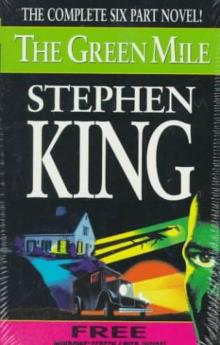 The Green Mile
The Green Mile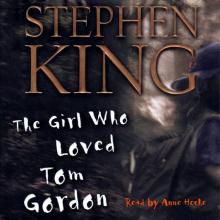 The Girl Who Loved Tom Gordon
The Girl Who Loved Tom Gordon Cujo
Cujo The Outsider_A Novel
The Outsider_A Novel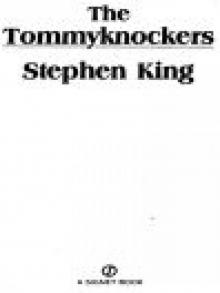 The Tommyknockers
The Tommyknockers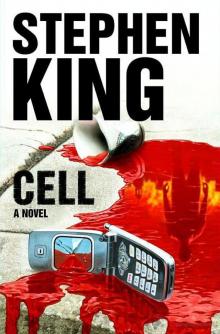 Cell
Cell Pet Sematary
Pet Sematary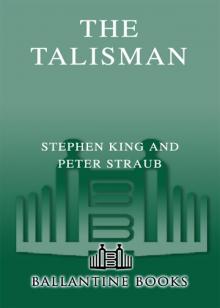 The Talisman
The Talisman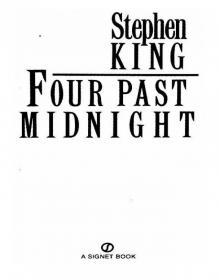 Four Past Midnight
Four Past Midnight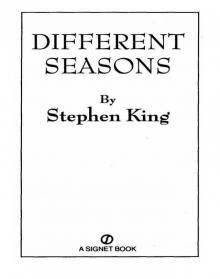 Different Seasons
Different Seasons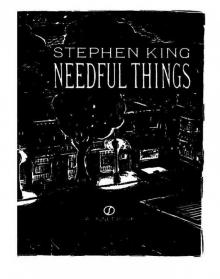 Needful Things
Needful Things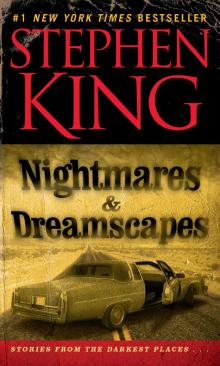 Nightmares and Dreamscapes
Nightmares and Dreamscapes Christine
Christine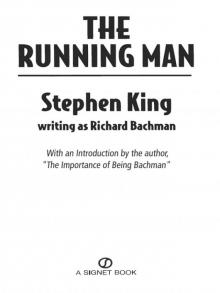 The Running Man
The Running Man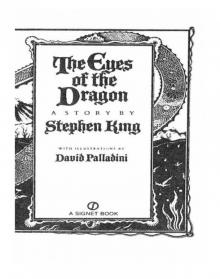 The Eyes of the Dragon
The Eyes of the Dragon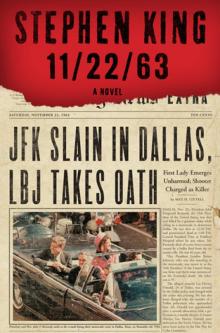 11/22/63
11/22/63 Firestarter
Firestarter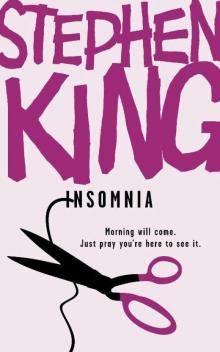 Insomnia
Insomnia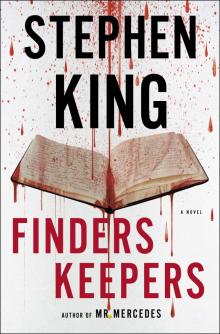 Finders Keepers
Finders Keepers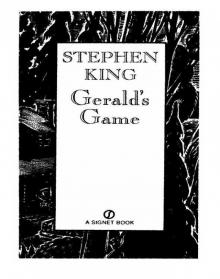 Gerald's Game
Gerald's Game The Wind Through the Keyhole
The Wind Through the Keyhole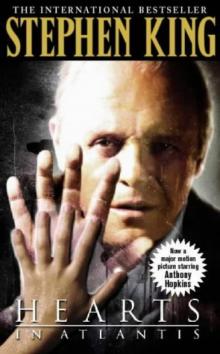 Hearts in Atlantis
Hearts in Atlantis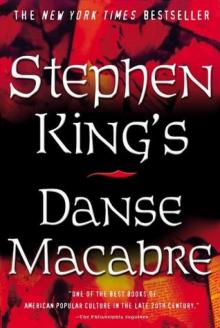 Danse Macabre
Danse Macabre Thinner
Thinner Duma Key
Duma Key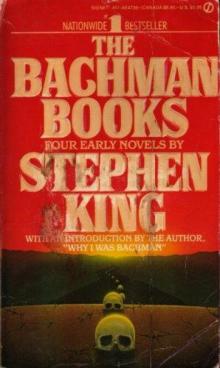 The Bachman Books
The Bachman Books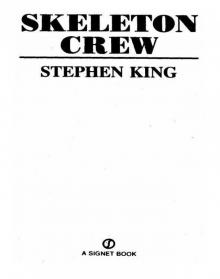 Skeleton Crew
Skeleton Crew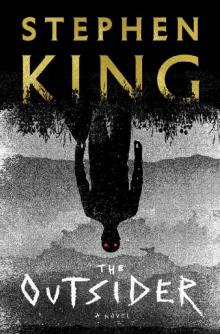 The Outsider-Stephen King
The Outsider-Stephen King Full Dark, No Stars
Full Dark, No Stars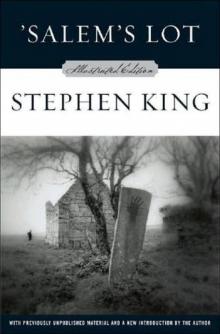 Salem's Lot
Salem's Lot Bag of Bones
Bag of Bones Desperation
Desperation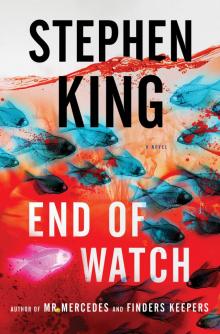 End of Watch
End of Watch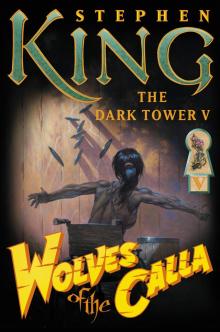 Wolves of the Calla
Wolves of the Calla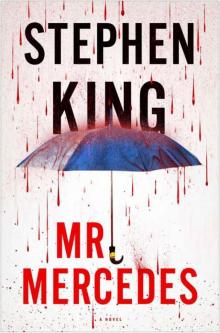 Mr. Mercedes
Mr. Mercedes Billy Summers
Billy Summers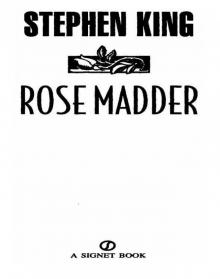 Rose Madder
Rose Madder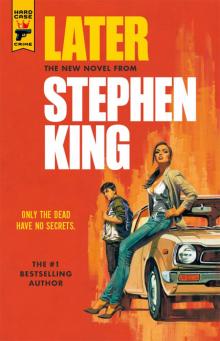 Later
Later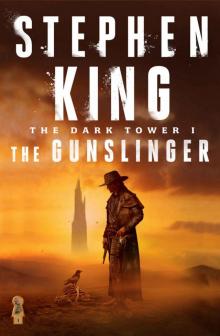 Gunslinger
Gunslinger The Langoliers
The Langoliers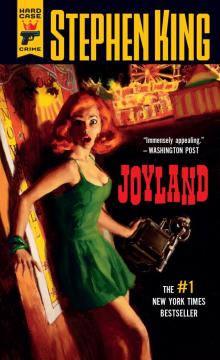 Joyland
Joyland If It Bleeds
If It Bleeds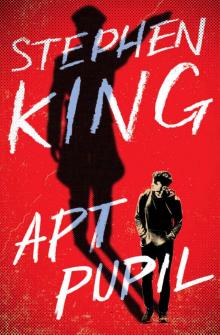 Apt Pupil (Scribner Edition)
Apt Pupil (Scribner Edition) Flight or Fright
Flight or Fright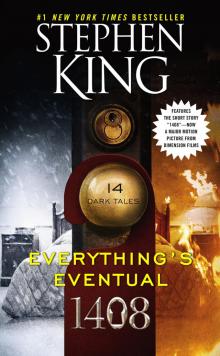 Everything's Eventual: 14 Dark Tales
Everything's Eventual: 14 Dark Tales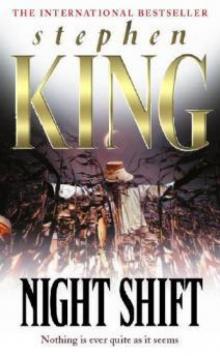 Night Shift
Night Shift The Dark Half
The Dark Half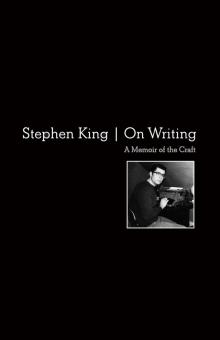 On Writing
On Writing The Institute
The Institute A Death
A Death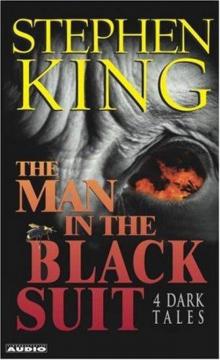 The Man in the Black Suit : 4 Dark Tales
The Man in the Black Suit : 4 Dark Tales Bullet
Bullet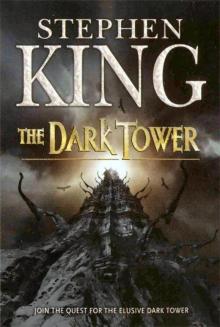 The Dark Tower tdt-7
The Dark Tower tdt-7 Chiral Mad 3
Chiral Mad 3 Big Driver
Big Driver Stephen King: The Green Mile
Stephen King: The Green Mile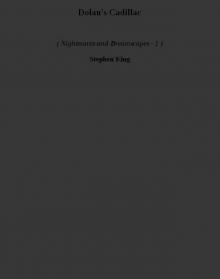 Dolan's Cadillac nad-1
Dolan's Cadillac nad-1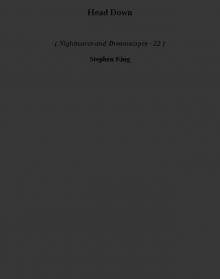 Head Down nad-22
Head Down nad-22 The Doctor's Case
The Doctor's Case Luckey Quarter
Luckey Quarter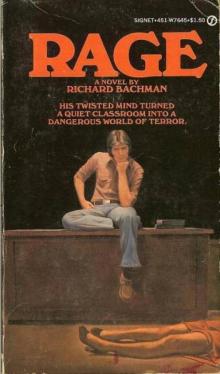 Rage (richard bachman)
Rage (richard bachman)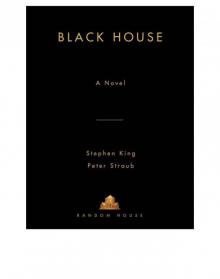 Black House js-2
Black House js-2 The Wind Through the Keyhole (Dark Tower)
The Wind Through the Keyhole (Dark Tower) Duma Key: A Novel
Duma Key: A Novel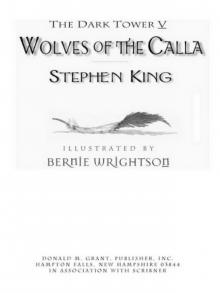 Dark Tower V, The
Dark Tower V, The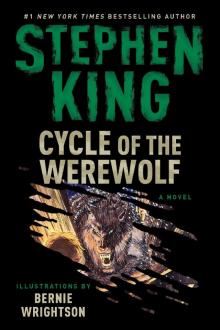 Cycle of the Werewolf
Cycle of the Werewolf AUTOPSY ROOM FOUR
AUTOPSY ROOM FOUR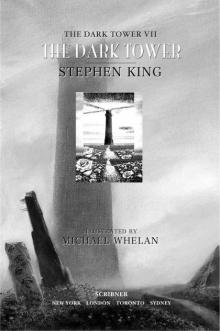 Dark Tower VII, The (v. 7)
Dark Tower VII, The (v. 7) Gramma
Gramma Suffer the Little Children
Suffer the Little Children Chinga
Chinga Word Processor of the Gods
Word Processor of the Gods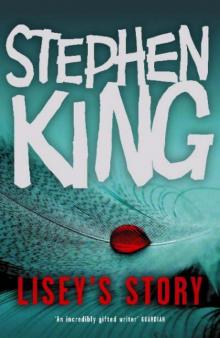 Lisey’sStory
Lisey’sStory Dark Tower V (Prologue)
Dark Tower V (Prologue)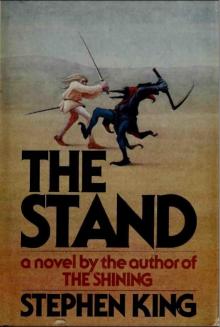 The Stand (Original Edition)
The Stand (Original Edition)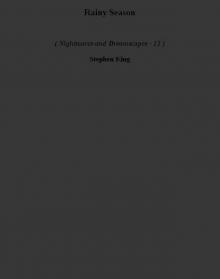 Rainy Season nad-13
Rainy Season nad-13 Transgressions
Transgressions The Plant
The Plant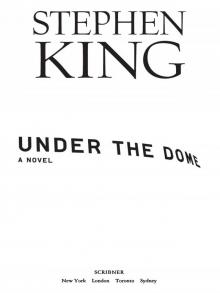 Under the Dome: A Novel
Under the Dome: A Novel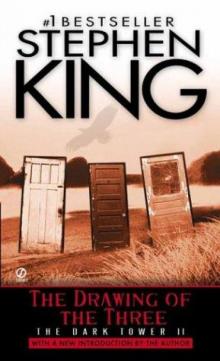 The Dark Tower II: The Drawing of the Three
The Dark Tower II: The Drawing of the Three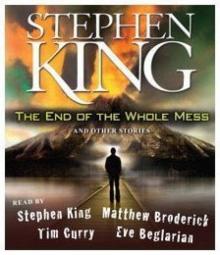 The End of the Whole Mess:
The End of the Whole Mess: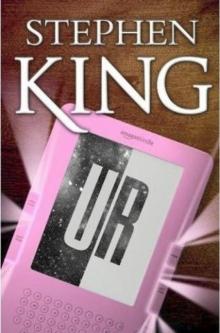 Ur
Ur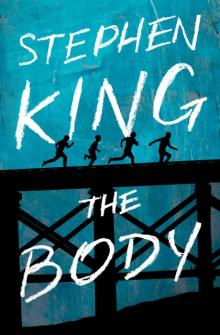 The Body
The Body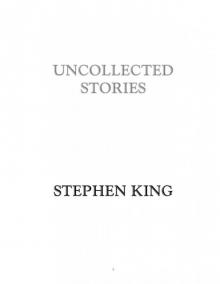 Uncollected Stories 2003
Uncollected Stories 2003 Chattery Teeth
Chattery Teeth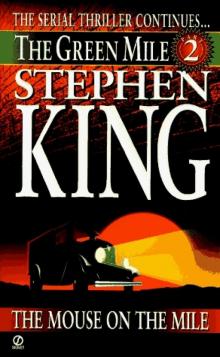 The Mouse on the Mile
The Mouse on the Mile The Cat from Hell
The Cat from Hell![The Drawing of the Three [The Dark Tower II] Read online](http://i1.bookreadfree.com/i/03/25/the_drawing_of_the_three_the_dark_tower_ii_preview.jpg) The Drawing of the Three [The Dark Tower II]
The Drawing of the Three [The Dark Tower II] Cell: A Novel
Cell: A Novel Uncle Otto's Truck
Uncle Otto's Truck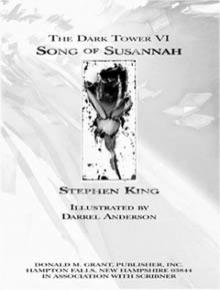 Song of Susannah dt-6
Song of Susannah dt-6 The Dark Tower VII
The Dark Tower VII Head Down
Head Down Sneakers
Sneakers Crouch End
Crouch End Outsider
Outsider End of Watch: A Novel (The Bill Hodges Trilogy Book 3)
End of Watch: A Novel (The Bill Hodges Trilogy Book 3) Revival: A Novel
Revival: A Novel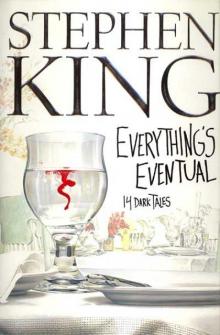 Everything's Eventual skssc-4
Everything's Eventual skssc-4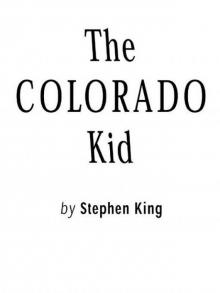 The Colorado Kid
The Colorado Kid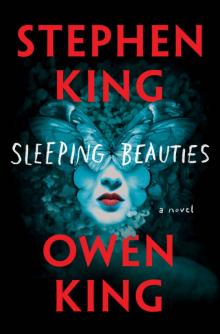 Sleeping Beauties: A Novel
Sleeping Beauties: A Novel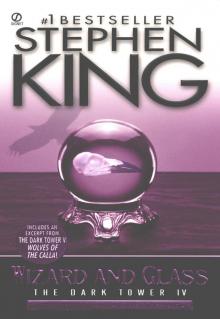 The Dark Tower IV Wizard and Glass
The Dark Tower IV Wizard and Glass A Book of Horrors
A Book of Horrors Four Past Midnight - 3 - Secret Window, Secret Garden
Four Past Midnight - 3 - Secret Window, Secret Garden The House on Maple Street
The House on Maple Street Sometimes They Come Back
Sometimes They Come Back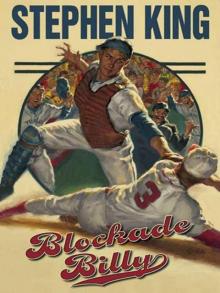 Blockade Billy
Blockade Billy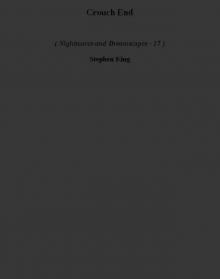 Crouch End nad-17
Crouch End nad-17 Lunch at the Gotham Cafe
Lunch at the Gotham Cafe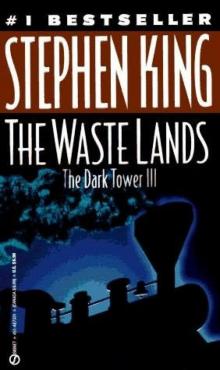 The Waste Lands dt-3
The Waste Lands dt-3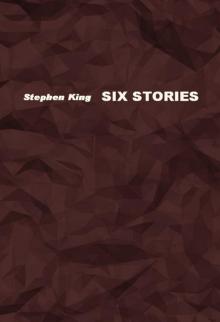 Six Stories
Six Stories A Face in the Crowd
A Face in the Crowd Case
Case Four Past Midnight - 2 - The Langoliers
Four Past Midnight - 2 - The Langoliers Umney's last case nad-21
Umney's last case nad-21 Survivor Type
Survivor Type Guns (Kindle Single)
Guns (Kindle Single) You Know They Got a Hell of a Band
You Know They Got a Hell of a Band The Jaunt
The Jaunt In A Half World Of Terror
In A Half World Of Terror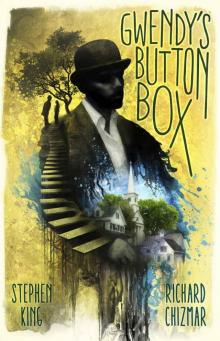 Gwendy's Button Box
Gwendy's Button Box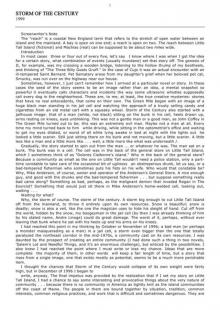 Storm of the Century
Storm of the Century The Jaunt. Travel
The Jaunt. Travel Roadwork
Roadwork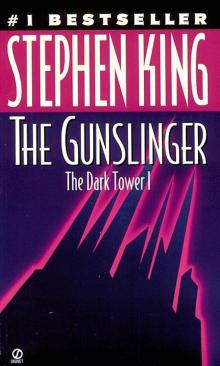 Darktower 1 - The Gunslinger
Darktower 1 - The Gunslinger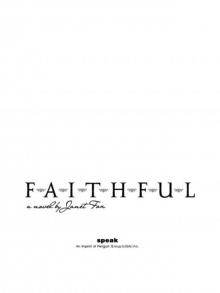 Faithful
Faithful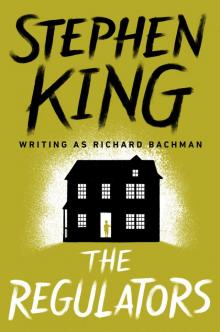 The Regulators
The Regulators A Bedroom in the Wee Hours of the Morning
A Bedroom in the Wee Hours of the Morning Graveyard Shift
Graveyard Shift The Monkey
The Monkey Children of the Corn
Children of the Corn The Reploids
The Reploids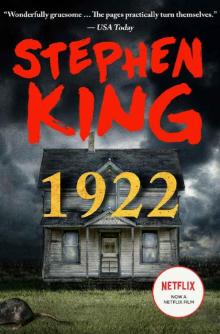 1922
1922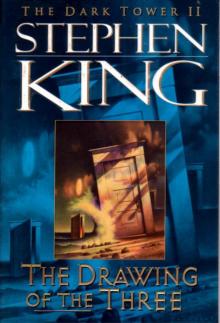 Darktower 2 - The Drawing of the Three
Darktower 2 - The Drawing of the Three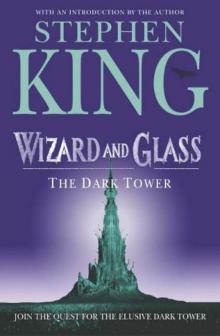 Wizard and Glass dt-4
Wizard and Glass dt-4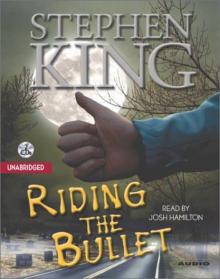 Riding The Bullet
Riding The Bullet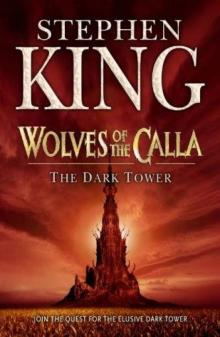 Wolves of the Calla dt-5
Wolves of the Calla dt-5 L.T.'S Theory Of Pets
L.T.'S Theory Of Pets The Langoliers fpm-1
The Langoliers fpm-1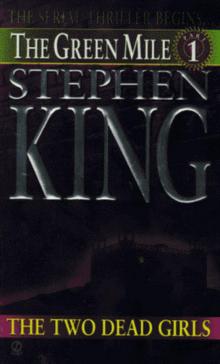 The Two Dead Girls
The Two Dead Girls The Blue Air Compressor
The Blue Air Compressor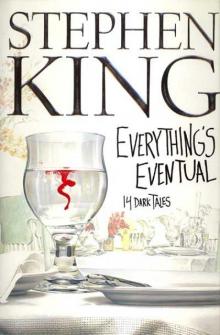 Everything's Eventual
Everything's Eventual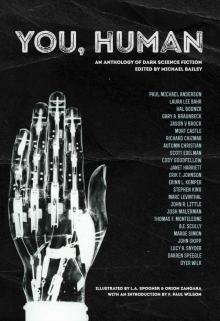 You, Human: An Anthology of Dark Science Fiction
You, Human: An Anthology of Dark Science Fiction The Night of The Tiger
The Night of The Tiger The Regulators (richard bachman)
The Regulators (richard bachman)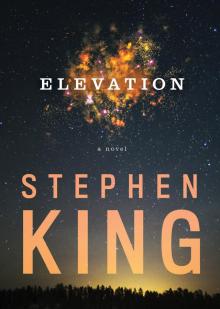 Elevation
Elevation The Road Virus Heads North
The Road Virus Heads North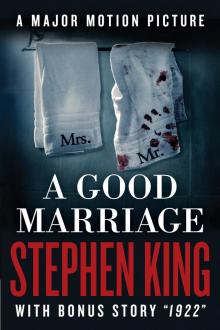 Good Marriage
Good Marriage Four Past Midnight - 5 - The Library Policeman
Four Past Midnight - 5 - The Library Policeman Grey Matter
Grey Matter Herman Wouk Is Still Alive
Herman Wouk Is Still Alive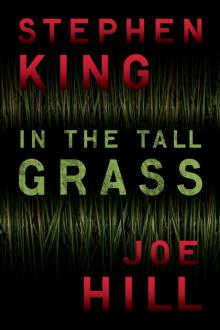 In the Tall Grass
In the Tall Grass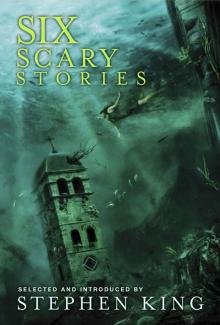 Six Scary Stories
Six Scary Stories Foreward
Foreward The Crate
The Crate The wind through the keyhole adt-8
The wind through the keyhole adt-8 King, Stephen - Battleground
King, Stephen - Battleground The Wedding Gig
The Wedding Gig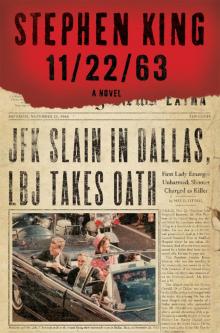 11/22/63: A Novel
11/22/63: A Novel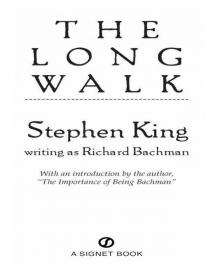 The Long Walk
The Long Walk